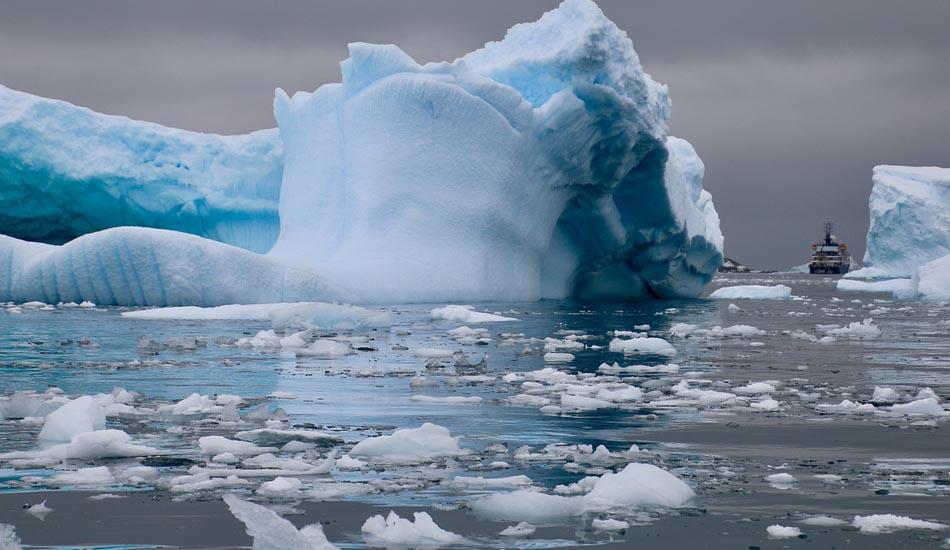The continent of Antarctica registered its hottest day ever recently with a temperature of 64.9°F. The reading was taken from Esperanza, an Argentinian research base at the continent’s northwest point, which is regarded as one of the fastest-warming regions in the world.
Rising temperatures in Antarctica
The record temperature “is 0.8C [1.4 degrees Fahrenheit] hotter than the previous peak temperature of 17.5C [63.5 degrees Fahrenheit], in March 2015… While 18.3C [64.9 degrees Fahrenheit] is a record for the Antarctic continent, the record in the wider Antarctic region — which includes the continent, islands and ocean that are in the Antarctic climatic zone — is 19.8C [67.6 degrees F], logged in January 1982,” according to BBC.
The UN World Meteorological Organization (WMO) verified the temperature readings, with a spokeswoman commenting that such a figure is not something one would normally associate with Antarctica even when it is summer. In the past 50 years, the Antarctic continent has seen a temperature increase of 5.4 degrees Fahrenheit. Almost 87 percent of the glaciers on the West Coast have “retreated” during this time. A glacier is said to be in retreat when its lowest end does not extend all the way down the valley as it previously did.
Between 1979 and 2017, the amount of ice annually lost from the Antarctic ice sheet rose by 6 times. According to a recent report published in the Proceedings of the National Academy of Sciences (PNAS), the mass melting of the West Antarctic Ice Sheet was the biggest trigger for high sea levels about 129,000 to 116,000 years ago, a period that is called the “Last Interglacial.”

The mass melting of the West Antarctic Ice Sheet was the biggest trigger for high sea levels during the ‘Last Interglacial’ about 129,000 to 116,000 years ago. (Image: Jason Auch via Wikimedia Commons)
“Not only did we lose a lot of the West Antarctic Ice Sheet, but this happened very early during the Last Interglacial… The melting was likely caused by less than 2°C [3.6°F] ocean warming — and that’s something that has major implications for the future, given the ocean temperature increase and West Antarctic melting that’s happening today,” Chris Turney, Professor in Earth and Climate Science at UNSW Sydney and lead author of the study, said to Science Daily.
And while some alarmists may claim that the entire world will end up underwater due to the melting of the polar ice caps, this is not true at all. Even if all the ice in Antarctica, Greenland, and all other mountain glaciers in the world were to melt, sea levels would rise only by 230 feet at most. This would definitely sink all of the coastal cities. However, the interior regions would remain unaffected and habitable. To be realistic, this is an extreme scenario that is never likely to happen at all. At worst, we might see sea levels rise by a few dozen feet. Even during the Last Interglacial, sea levels rose by only around 10 feet or so.
Spawning iceberg in Antarctica
Pine Island Glacier, which is ranked as one of the fastest shrinking glaciers in Antarctica, recently lost a big chunk to the sea. The iceberg that broke off from Pine Island was about twice the size of the District of Columbia. However, it did not remain that size for long as it quickly fragmented into the ocean.

Pine Island Glacier is ranked as one of the fastest-shrinking glaciers in Antarctica. (Image: via Wikimedia Commons)
No significant impact on the sea level is expected from this incident. “Calving is a normal part of life for ice formations with sections that float on the water… Because ice at the edge of the glacier was already floating, this ice will not directly contribute to sea level rise when it inevitably melts,” according to Live Science.
Pine Island glacier is almost 155 miles in length and 1.2 miles in thickness, with a total area of about 67,570 square miles. The area drained by the glacier contributes about 10 percent of the West Antarctic Ice Sheet.
Follow us on Twitter, Facebook, or Pinterest

